Photinia x fraseri 'FAROS RED' Fraser's photinia
Photinia
The genus Photinia belongs to the rose family and comprises roughly thirty species of shrubs and small trees distributed from the Himalayas across China to Japan, with a single representative in North America. Fossil finds from the Eocene confirm that the genus has existed on our planet for tens of millions of years, and its taxonomy has long been unsettled: some species were repeatedly shifted between the related genera Stranvaesia and Heteromeles and back again, as botanists’ understanding of their relationships evolved or as they came under the scrutiny of genetic research. This tangled history is reflected in the internal diversity of the genus, which was first formally described in 1820 by the British botanist John Lindley (1799–1865), who aptly chose the Greek word phōteinos, meaning “shining”, as a reference to the glossy leaves of most species, especially the evergreen ones. Yet there are also deciduous mountain species, such as Photinia villosa or Photinia beauverdiana, which may seem atypical at first glance, but modern genetics confirms that they truly belong here. The main unifying feature of the genus is its geographical continuity across East Asia and the stable morphology of its flowers and fruits, which holds the genus together despite its evolutionary adventures.
Fraser’s photinia is the child of two Asian parents – the Japanese mother Photinia glabra and the Chinese father Photinia serratifolia – who met only on the other side of the world. Since their flowers are fully compatible, they hybridise spontaneously, and this accidental union was first recorded around 1940 in Birmingham, Alabama, USA, where both species were commonly grown at the time. It was noticed by growers at Fraser Nursery, after which the hybrid was eventually named, and their original seedling was simply called ‘Birmingham’ after the place of discovery. The formal description under the name Photinia × fraseri was published only in 1961 by the American botanist W.J. Dress, who confirmed that it is a stable hybrid. What remains unclear is whether the later successful cultivars from Australia and New Zealand arose from imported American material, or whether the same spontaneous hybridisation occurred independently in the Southern Hemisphere. Either way, thanks to its resilience and near indestructibility, Fraser’s photinia soon became one of the most successful evergreen shrubs of the second half of the 20th century.
Faros Red is one of the photinias of the dawn of the third millennium. It is a selection that combines the vigorous growth of ‘Red Robin’ with the compact shape and darker foliage of CARRÉ ROUGE. Its hardiness is also a few degrees better, which can make a real difference in our climate. In spring it produces bright red young leaves that hold their colour for quite a long time before turning green at the beginning of summer. In mid‑summer a second flush of red growth appears, and if the season is favourable and the summer long, a third flush may follow in early autumn – this time in a rich burgundy shade that remains throughout the winter. The leaves are evergreen, leathery, broadly oval, slightly smaller and narrower than those of ‘Red Robin’, and very glossy.
In mid‑spring, older plants produce medium‑sized clusters of creamy‑white flowers, which may develop into small red fruits, although due to low fertility only a few ripen and most inflorescences naturally drop. The habit is dense, upright to slightly rounded, making it suitable both for hedging and for mixed plantings with other shrubs. It grows quickly. Thanks to its striking colour it brings welcome contrast to evergreen screens and conifer plantings, and because it does not look entirely ordinary, it is often used in gardens with an exotic touch, where its highly glossy and uniquely coloured foliage easily evokes the richness of tropical forests and jungle gardens.
When small red spots appear on the leaves, they are caused either by natural pigmentation triggered by temporary physiological stress or by a common fungal disease (Entomosporium). In most cases, it is merely an aesthetic issue. Only in the event of heavy leaf-drop do we recommend treating them with appropriate fungicide and disposing of fallen leaves from the garden (do not compost them!). The plant will soon replace the shed foliage.
Fraser’s photinia is surprisingly tolerant of various environments. It thrives best in moist but not waterlogged soil and in a fertile position, yet it will grow even in ordinary or poorer soil – it will simply be a little less dense. Acidic soil enhances leaf colour, but it is not essential. It colours best and grows most densely in full sun, but it also tolerates light partial shade. In deep shade, however, it loses the colour of its young leaves, produces elongated shoots, and appears thin. Due to the high evaporation rate we recommend mulching generously after planting and giving young plants extra water during summer. Once established (usually after 1–2 years), it becomes remarkably drought-tolerant, which is why you encounter it so often in Mediterranean gardens, even in places scorched by heat. Just one thing – Mediterranean winters bring plenty of rain, a luxury continental Europe does not always enjoy. Therefore, during dry winters, if the ground is not frozen, water the plant thoroughly once a month so the leaves can better withstand severe frosts. Proven hardiness reaches –24 °C (USDA zone 6) without damage and can go a few degrees lower. After very strong frosts, the tips of the leaves may become dehydrated or scorched, but the plant regenerates reliably after a spring prune. It tolerates pruning extremely well – you can shape it almost anytime, and it even handles hard rejuvenation cuts. A spring prune in April encourages branching, while a summer prune helps refine the shape and often triggers an autumn flush of new red shoots. Suitable for cultivation in large outdoor planters (min. 80x80x80 cm) with regular watering.
Last update 16-10-2019; 31-12-202

































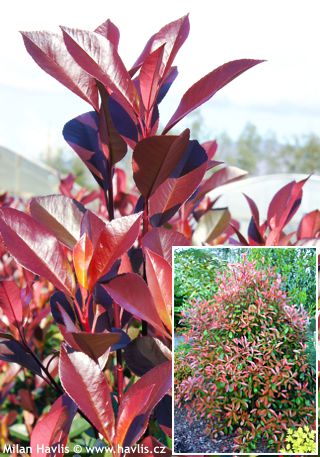
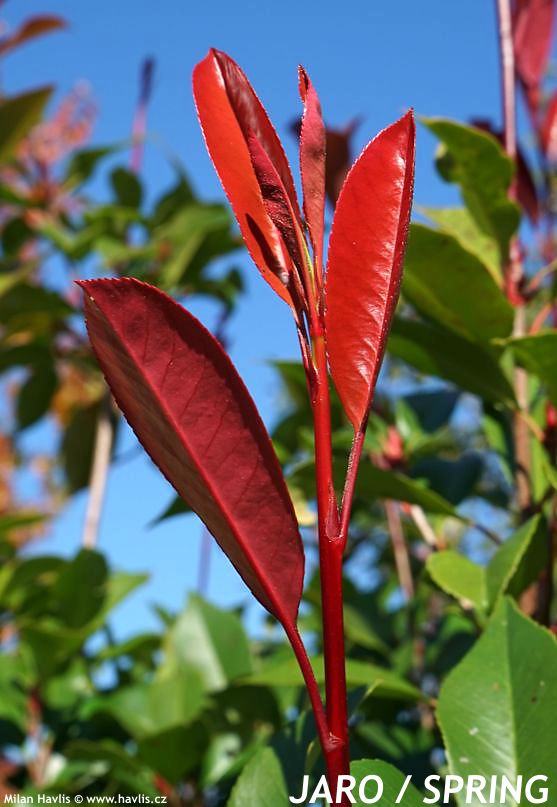
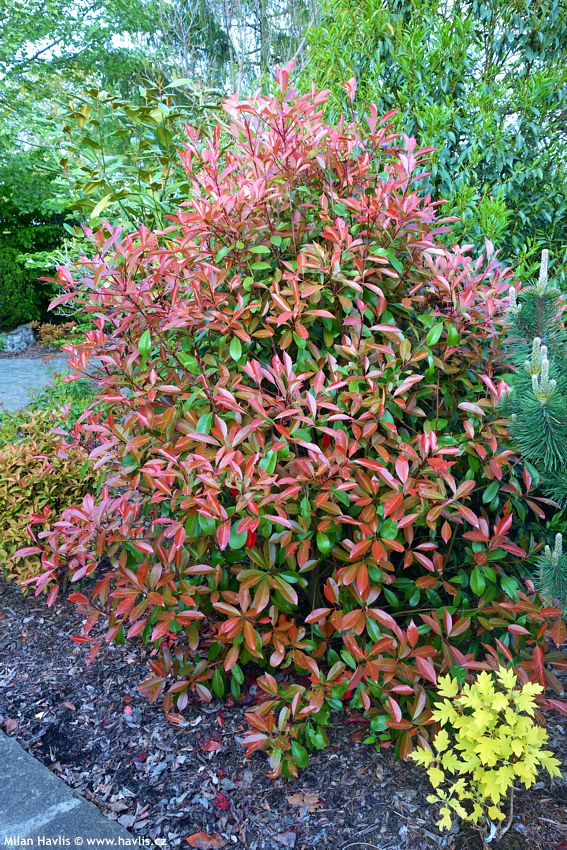
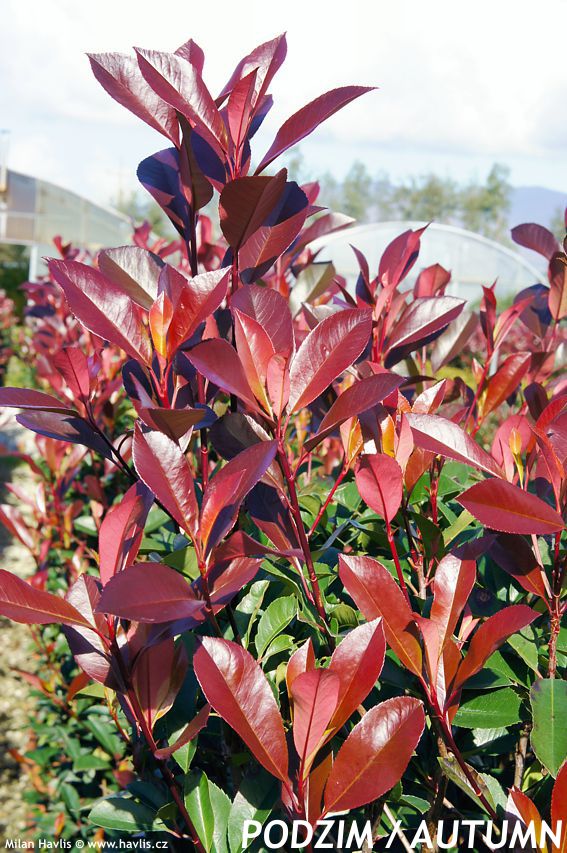



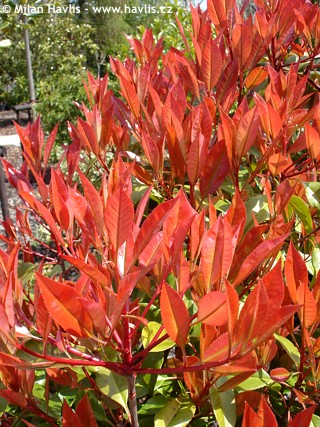
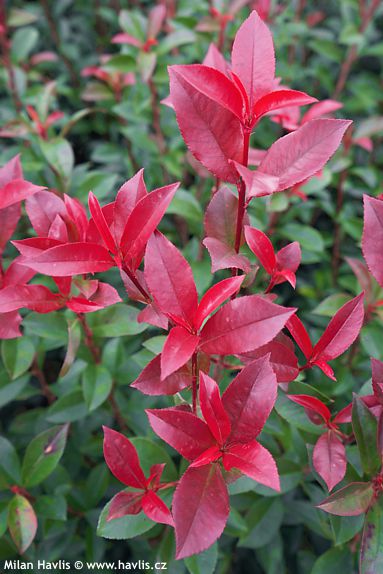
.jpg)
